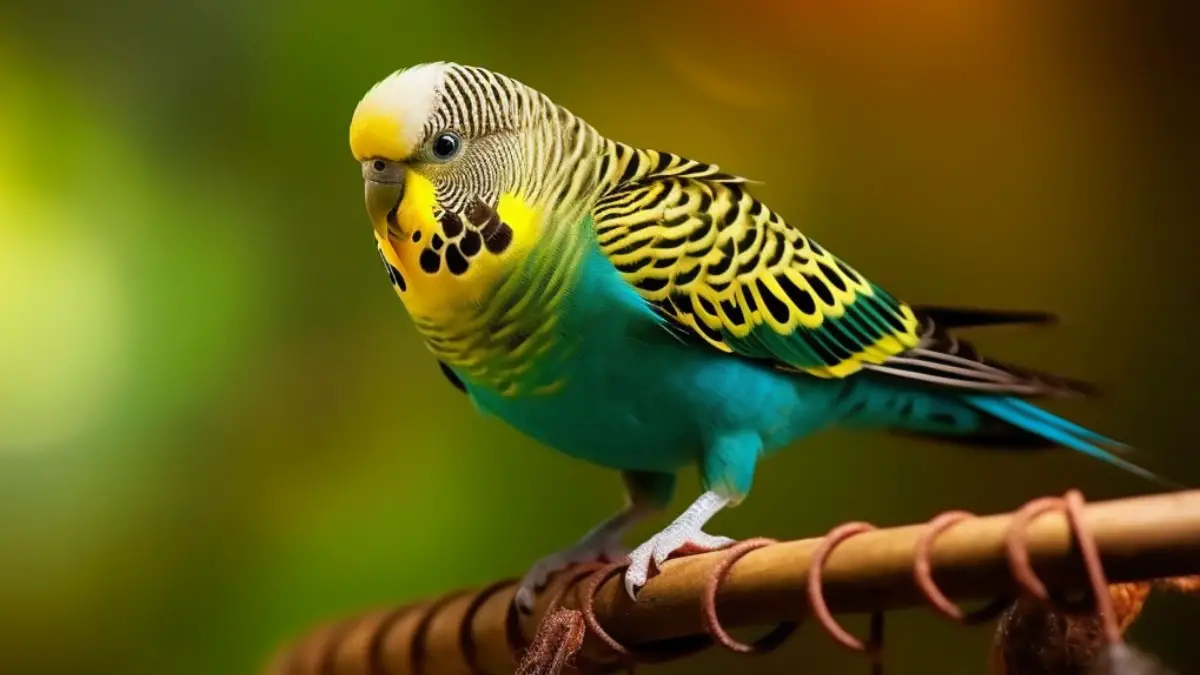Unlike in the wild, where budgies nest in a hole in a tree, at home, they use a box. Either your captive feathered friend is pregnant, or you just brought it; they need comfort. However, most new owners wonder what they should include in a box.
So, what do you put in a budgie nesting box? You can include dry grass, fluff, moss, dead twigs, or leaves in the nesting box. However, avoid any material that has been treated as harmful to your pet’s health. You can combine any two of the materials for more comfort.
Some materials can affect your budgies if they ingest them. Read on to learn the safe ones to use, which ones to avoid, and how to set them up.
What Do I Put in a Budgie’s Nesting Box?
Budgies are natives of Australia. In the breeding season, they nest in holes in a tree. They also build their nests on hollow logs or fence posts with cavities.
Wild budgie nests are lined using any material the birds can get in the wild. Some of these materials include wood, droppings, grass, feathers, lichen, and sometimes fur from wild animals.

However, captive budgies depend on the owners to create a nesting place. You can opt for a homemade parakeet nesting box or buy one from a pet store. Some of the things to include in their nesting box includes:
- Wood shavings
- Shredded paper
- Hay or dry grass
- Fluff
- Moss
- Dead twigs and leaves
- Feathers and cottonwood down

The flooring materials have many advantages to the bird, including comfort when it sits on the egg. The nesting materials also offer a better grip for the hatchlings, preventing conditions like Spraddle legs.
What Do Budgies Like in Their Nesting Box?
What budgies like in their nesting box differs from one bird to the other. Some budgies have been known to throw out everything you have added to the box. Most first-time breeding budgies don’t know what they need in their nest.

Therefore, it’s best to let your bird arrange the cage according to their liking. You can offer any mixture of the above materials and let them fix for themselves. The box should have a perch on the outside to make nest building easier for them.
How Do I Add Flooring Materials to The Budgies Nesting Box?
Once you have gathered the materials, it’s time to set them up. Follow the steps below to add materials to your pet bird’s nesting box.

- Open the nesting box and add the first type of material. It’s best to start by adding the less comfortable ones, like dry grass
- Add the second layer of the softer materials while trying to concave the surface. The curved surface resembles a wild budgie nest and restrains the eggs from rolling away
- Close the nesting box and place it by the cage. While at it, ensure you place it in the most convenient place
Budgie nest box size differs; you might have to use more materials if your box is bigger.

Note that some budgies might not like the material you use on the floor. You can tell this if your bird is pulling them out or rearranging them. You can try adding new materials or let the bird arrange them to its liking.
Also, you can add a mineral block to the nesting box to provide calcium and prevent conditions like egg binding.
What Should I Avoid Putting in a Nesting Box?
Since the bird spends much time during the incubation period, the things you put in the nesting box matter. The wrong material can choke the bird, or worse, poison and kill it. The following are some things to avoid putting in your budgie’s nesting box.

1. Toxic materials
Avoid flooring materials like cellophane, tinsel, and plastic strips. They can choke the bird if it attempts to feed on them during the period.
2. Foodstuffs and water
Foodstuffs can end up mixing with water and wetting the flooring materials. A wet floor is uncomfortable for the bird and might invite pests to the nest.
3. Treated materials
Treated flooring materials, like shavings from a tree with pesticides, can harm the bird’s health. Pesticides are known to cause sublethal effects on birds, affecting their fertility and ability to hatch.
Before putting anything in your budgie’s nest, ask yourself whether it may affect it in any way. You don’t want to mess up your pet birds thinking you’re doing them good.
FAQs
The following section offers answers to some of the frequently asked questions related to this topic. The answers are well-researched to help clear any doubt.
Budgies need a breeding box especially for breeding during their season. However, most avian professionals discourage keeping the nesting box during off-season months.
Though a budgie can use a nesting box without materials, it’s best to add some. Since wild budgies also use materials, they should be offered some to prevent egg damage and encourage it to lay more eggs.
It’s ill-advised to include foodstuffs in the nesting box as they can promote infestations. Any spillage in the nesting box can damage the nesting material or the nesting box.
Final Note
The nesting season is a grand period when your feathered friends hatch new birds. The preparation is key, especially in the nesting box where the female incubates the eggs. The nesting materials must be suitable and comfortable, and, most importantly, safe.
Avoid any plastic bending or materials that your bird can’t digest. Also, avoid foodstuffs, especially liquids, though you can add some mineral blocks for calcium. Make a concave circle where the bird will lay and sit on the eggs comfortably.







